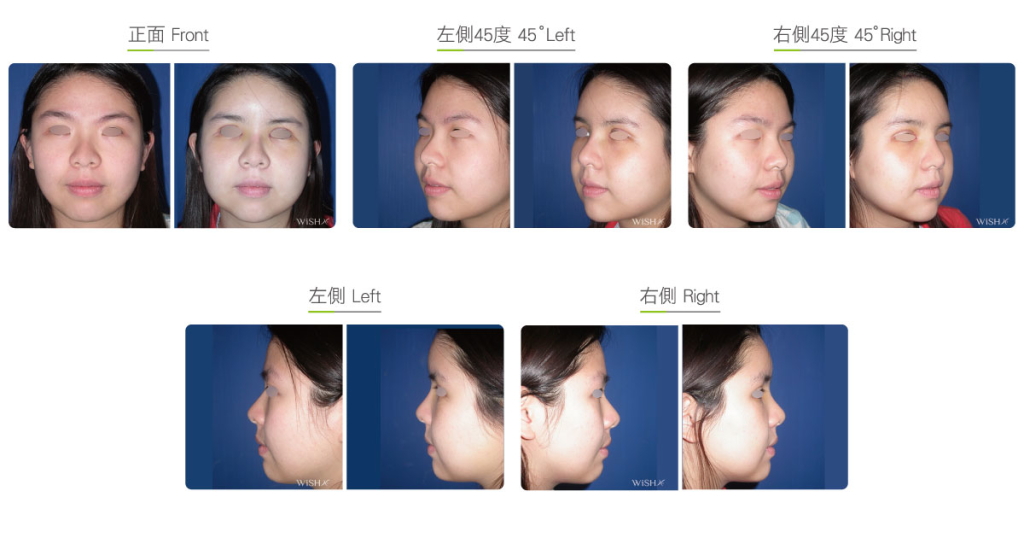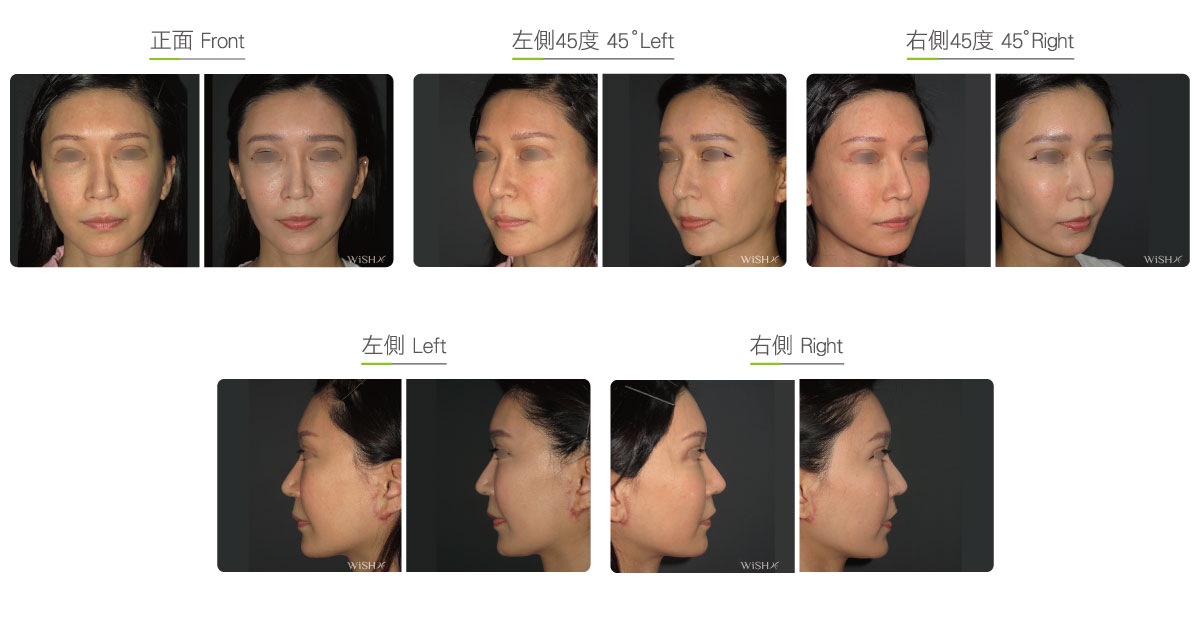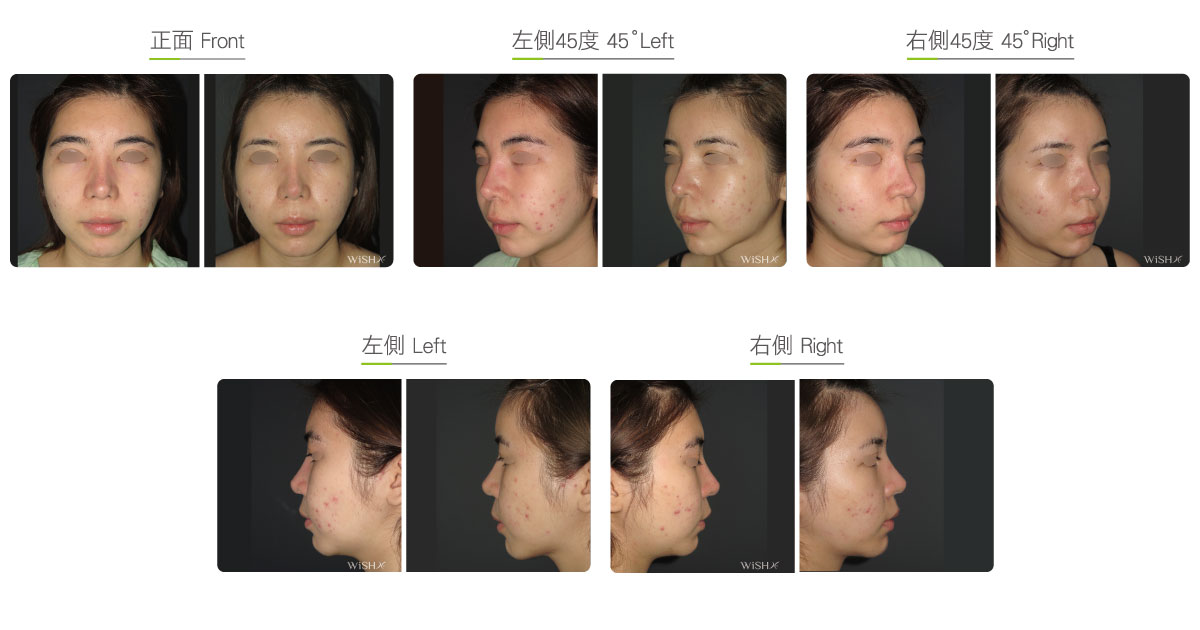Autologous Fat Grafting
Similar to fat transfer at other facial sites, this surgery requires harvesting fats from other body parts, which are mixed with growth factors after purification and infiltration before they are injected into the forehead or temple to be filled at an appropriate volume. The greatest difference between this method and forehead implant augmentation is that it can fill the regional depression (such as glabellar depression or bone deformity caused by trauma) and also fill the lateral temple (the so-called “marriage palace”) with highly flexible and extensive application, and there are no problems derived from prosthesis like displacement and infection. However, fat grafting presents different degrees of absorption or loss due to individual physical constitutions; with an average self-absorption rate of up to 50% or above, long-term results do not last as long as those obtained with forehead implant augmentation.
Surgical conditions
Duration
- Type of anesthesia: IV sedation + local anesthesia and regional nerve block
- Type of incision: A 2-mm needle hole in the scalp hairlineIncision for liposuction at the umbilicus or medial thigh
- Recovery: 7–10 days
- Removal of stitches: 7 days
General instructions
No food and water on the day of surgery
- Avoid excess ice and hot compresses after the operation.
- Avoid smoking, alcohol, and irritating foods for 1 month postoperatively.
- Avoid heavy massage to or squeezing of the forehead for 3 months postoperatively.
Ideal candidates
- Patients with an uneven or irregular forehead
- Those with a broad, flat forehead combined with temporal depression
- Those with forehead regional depression or a deformity due to trauma or scar adhesion
- Those who only need regional forehead augmentation (such as the glabella, nasion, eyebrow bone, or temple)
Possible complications
- Self-absorption of fats
- Uneven absorption
- Premature absorption
- Lumps, unevenness of shape
Surgical advantages
-
The surgical incision is as small as a needle hole and leaves no marks on the scalp.
-
Regional or small-area fat grafting is conducted, and the application is highly flexible and customized.
-
Forehead and temporal depressions are filled at one time.
-
Possible complications of prosthesis are avoided.
Surgical drawbacks
-
Fats will be absorbed by the body, so long-term results may decline.
-
Fat absorption or loss varies with individual constitution, and secondary fat grafting may be necessary in the future.
-
The forehead appears round and thick and not as bony and sharp as that obtained using emplaced forehead implants.
-
If conducted along with temporal fat augmentation, it may cause an enlarged head circumference.
-
Liposuction needs to be conducted at other body parts.



